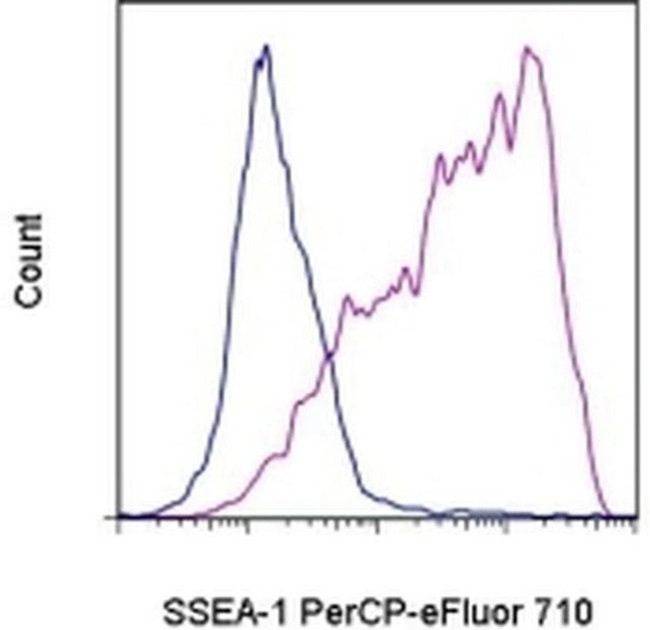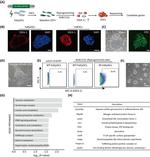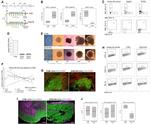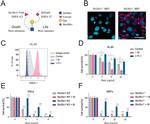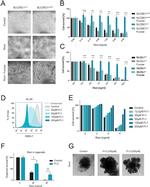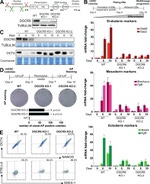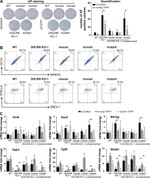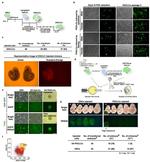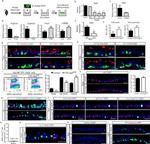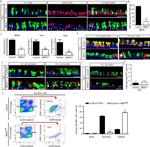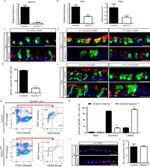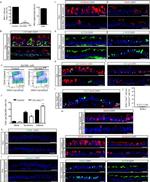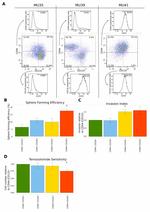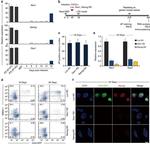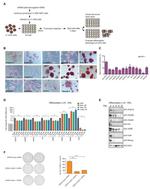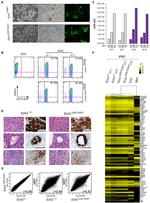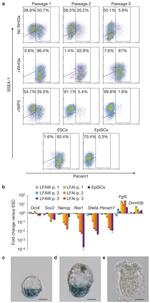Search Thermo Fisher Scientific
Invitrogen
SSEA1 Monoclonal Antibody (eBioMC-480 (MC-480)), PerCP-eFluor™ 710, eBioscience™
Product Details
46-8813-42
Species Reactivity
Published species
Host/Isotype
Class
Type
Clone
Conjugate
Excitation/Emission Max
Form
Concentration
Purification
Storage buffer
Contains
Storage conditions
Shipping conditions
RRID
Product Specific Information
Description: The eBioMC-480 (MC-480) antibody reacts with the stage-specific embryonic antigen-1 (SSEA-1), a carbohydrate epitope expressed upon the surface of early mouse embryos, murine embryonal carcinoma cells (EC), murine embryonic stem cells (ES) and murine and human germ cells (EG). No immunoreactivity is evident with undifferentiated human EC and ES cells. Differentiation of human EC results in an increase in SSEA-1 expression, while in the mouse expression is diminished. Expression of the carbohydrate moiety is also found on mature human granulocytes (on CD15) and some monocytes. SSEA-1 is associated with cell adhesion, migration and differentiation.
Applications Reported: This eBioMC-480 (MC-480) antibody has been reported for use in flow cytometric analysis.
Applications Tested: This eBioMC-480 (MC-480) antibody has been pre-titrated and tested by flow cytometric analysis of F9 cells. This can be used at 5 µL (0.125 µg) per test. A test is defined as the amount (µg) of antibody that will stain a cell sample in a final volume of 100 µL. Cell number should be determined empirically but can range from 10^5 to 10^8 cells/test.
PerCP-eFluor® 710 can be used in place of PE-Cy5, PE-Cy5.5 or PerCP-Cy5.5. PerCP-eFluor® 710 emits at 710 nm and is excited with the blue laser (488 nm). Please make sure that your instrument is capable of detecting this fluorochrome. For a filter configuration, we recommend using the 685 LP dichroic mirror and 710/40 band pass filter, however the 695/40 band pass filter is an acceptable alternative.
Our testing indicates that PerCP-eFluor® 710 conjugated antibodies are stable when stained samples are exposed to freshly prepared 2% formaldehyde overnight at 4°C, but please evaluate for alternative fixation protocols.
Excitation: 488 nm; Emission: 710 nm; Laser: Blue Laser.
Filtration: 0.2 µm post-manufacturing filtered.
Target Information
CD15 (Lewis X, Le(x); stage specific embryonic antigen-1, SSEA-1) is a trisacharide determinant (3-fucosyl-N-acetyllactosamine) expressed on several glycolipids, glycoproteins and proteoglycans of various cell types, e.g. granulocytes, mast cells, monocytes, macrophages, cells of gastric mucosa, nervous system or various tumour cells. There are several variants of Lewis x, such as sialyl-Lewis x or sulphated Lewis x. Cells with high surface expression of Le(x) antigen exhibit strong self-aggregation, based on calcium-dependent Le(x)-Le(x) interaction. This process is involved for example in embryo compaction or in autoaggregation of teratocarcinoma cells. Sialyl-Le(x) and its isomer sialyl-Le(a) are ligands of selectins. CD15 expression has been extensively used to confirm diagnosis of Hodgkin's disease.
For Research Use Only. Not for use in diagnostic procedures. Not for resale without express authorization.
How to use the Panel Builder
Watch the video to learn how to use the Invitrogen Flow Cytometry Panel Builder to build your next flow cytometry panel in 5 easy steps.
Bioinformatics
Protein Aliases: 3-fucosyl-N-acetyl-lactosamine epitope; 4-galactosyl-N-acetylglucosaminide 3-alpha-L-fucosyltransferase; alpha (1,3) fucosyltransferase, myeloid specific; alpha (1,3) fucosyltransferase, myeloid-specific; alpha 1,3-fucosyltransferase; Alpha-(1,3)-fucosyltransferase 4; ELAM ligand fucosyltransferase; ELAM-1 ligand fucosyltransferase; Fuc-TIV; Fucosyltransferase 4; fucosyltransferase 4 (alpha (1,3) fucosyltransferase, myeloid-specific); Fucosyltransferase IV; fucT-IV; FUTIV; Galactoside 3-L-fucosyltransferase; Lewis X; SSEA-1; stage-specific embryonic antigen 1
Gene Aliases: AI451562; CD15; ELFT; FAL; FCT3A; FUC-TIV; FucT-IV; FUT4; FUTIV; LeX; SSEA-1; Ssea1
UniProt ID: (Human) P22083, (Mouse) Q11127
Entrez Gene ID: (Human) 2526, (Mouse) 14345

Performance Guarantee
If an Invitrogen™ antibody doesn't perform as described on our website or datasheet,we'll replace the product at no cost to you, or provide you with a credit for a future purchase.*
Learn more
We're here to help
Get expert recommendations for common problems or connect directly with an on staff expert for technical assistance related to applications, equipment and general product use.
Contact tech support
